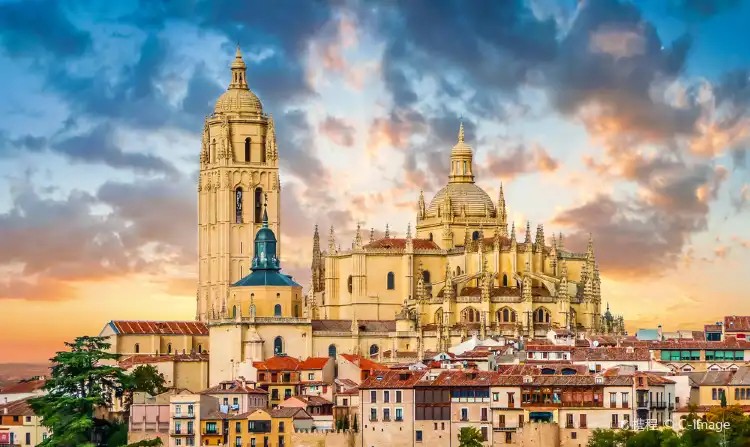
Find the Cheap Segovia Hotels
Enter your dates for the latest hotel rates and availability.
Swipe up to view more
Filter by:
Hotel Star Rating
≤2345
Popular Filters
Amazing 4.5+Great 4.0+Good 3.5+Pleasant 3.0+We found these top-rated hotels near Segovia for you
Choose your travel dates to see the latest prices and deals.
Most Booked
Lowest Price
Closest to Downtown
Highest Rated
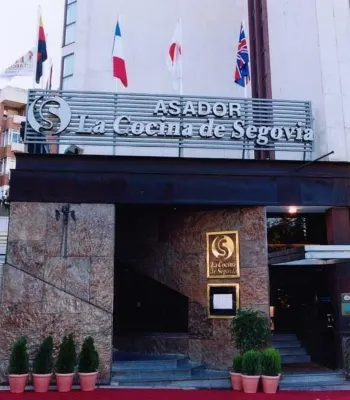


Hotel near Segovia
GGuest User 2023.12.12
Ha sido una buena elección, está a una distancia cómoda para visitar la ciudad sin necesidad de coche. La atención muy buena, el desayuno más que bien, las habitaciones son notables en comodidad. Quiero resaltar la deferencia habida, puesto que se nos olvidó alguna prenda y no demoraron nada en enviárnosla al domicilio.
Very Good
53 reviews
4.0/5
Price from
CAD 104
per night



Hotel near Segovia
GGuest User 2024.02.16
For car rental people, there is a very good point with parking service, and it is on the ancient street, opposite to a scenic spot, two steps to the drainage canal. There is a roast suckling pig on the ancient street. It is really delicious. It is burnt and tender. It is rare to feel that it can be comparable to Chinese food. This hotel is very elegant, and the top floor can be 360 degrees, see the scenery of the whole city, whether it is sunset and sunrise, the weather is good, you can see
Excellent
104 reviews
4.4/5
Price from
CAD 87
per night



Hotel near Segovia
GGuest User 2023.02.16
I have stayed here before and enjoyed my previous stay at the hotel and this wasn’t any different. As I was alone and staying just one night whilst travelling from the ferry in Santander to Málaga, I just needed somewhere clean and comfortable with a decent breakfast and that is exactly what I got for €50 (£44). The bathroom was good although the toilet was very close to the washbasin and tucked in behind one side but the shower was good with very hot water. Breakfast was good with a variety of cereals, eggs, ham, bread, yoghurt and fruit etc and the lady serving coffee was lovely and friendly. I will certainly stay here again, the location right on the Plaza Mayor could not be bettered.
Excellent
111 reviews
4.4/5
Price from
CAD 106
per night

You Might Like
Hotels With BreakfastHotels With Twin RoomHotels With 1 Double BedHotels With Swimming PoolHotels With Free Cancellation



Hotel near Segovia
GGuest User 2023.10.08
The apartments are in an amazing location in the historic centre of Segovia, and it was fabulous to look out over Plaza San Martin. The view from the roof terrace is stunning. The apartment is well equipped, but a lot of space was taken up with the kitchen area, and it would benefit from a little more storage space for luggage.
Excellent
22 reviews
4.5/5
Price from
CAD 156
per night
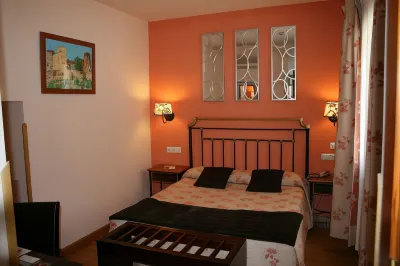
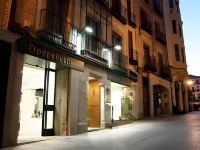

Hotel near Segovia
With a stay at Hotel Spa La Casa Mudéjar, you'll be centrally located in Segovia, steps from Corpus Christi Convent and Plaza Mayor. This spa hotel is 0.1 mi (0.2 km) from Juan Bravo Theater and 0.1 mi (0.2 km) from Casa de los Picos.
Pamper yourself with a visit to the spa, which offers massages and body treatments. You're sure to appreciate the recreational amenities, including a spa tub and a sauna. Additional features at this hotel include complimentary wireless internet access, concierge services, and wedding services.
Grab a bite at El Fogon Sefardi, one of the hotel's 2 restaurants, or stay in and take advantage of the room service (during limited hours). Snacks are also available at the coffee shop/cafe. Wrap up your day with a drink at the bar/lounge. Buffet breakfasts are available daily from 8:30 AM to 10:00 AM for a fee.
Featured amenities include complimentary wired internet access, a business center, and dry cleaning/laundry services. Planning an event in Segovia? This hotel has 538 square feet (50 square meters) of space consisting of conference space and 2 meeting rooms.
Stay in one of 42 guestrooms featuring plasma televisions. Complimentary wired and wireless internet access keeps you connected, and digital programming provides entertainment. Private bathrooms with bathtubs or showers feature rainfall showerheads and complimentary toiletries. Conveniences include phones, as well as safes and desks.
Very Good
74 reviews
4.1/5
Price from
CAD 110
per night



Hotel near Segovia
GGuest User 2023.05.09
The location is superb: five minutes walk to the castle, 7 minutes to the church, and 20 minutes to the Roman waterway. The service staff is warm and thoughtful, and the hotel's barrier-free facilities are very good, convenient for wheelchair guests. Drive directly into the booked hotel parking garage, parking fee 17 euros per night. Then there is a helicopter elevator to the front desk on the 2nd floor. Breakfast is on the first floor, it is quite rich in Europe, 9 euros per person. (These are the charges for May 2023). It is a boutique hotel and it is recommended.
Excellent
70 reviews
4.4/5
Price from
CAD 205
per night



Hotel near Segovia
GGuest User 2023.07.15
Because I especially like Segovia, I specially found a hotel with parking spaces. Many room types in this hotel cannot be unsubscribed.
Driving from Toledo to Segovia for an hour and a half, I parked the car in the white line at the entrance of the hotel. At the time of check-in, a yellow-haired fat front desk told the car that it must be parked in the charging place, and there was no free parking space seen when booking. The white line parking space can be parked for five minutes, and the timeout will call the trailer to tow me away. Helpless, I can stop in the blue line behind, because I can't operate, the front desk helped me enter the license plate number in the case of extreme impatience, I repeatedly confirmed whether it was correct and parked the car to pay. But I received an 80 euro ticket that night, but the front desk meant that I was not lucky, and she couldn’t help it. Later, thanks to a staff member telling me to cancel the ticket, I learned that the method of entering the license plate number at the front desk was wrong. Go to the front desk theory. The meaning of the front desk is very arrogant, that is, we are the front desk, we don't know how to enter the license plate number, this has nothing to do with us, I am very angry, quarreled, and I am not happy. Isn't this discrimination? The next day I checked out and went to the theory before going back. In short, this hotel was very uncomfortable.
Very Good
71 reviews
4.0/5
Price from
CAD 156
per night


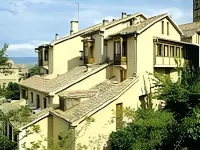
Hotel near Segovia
GGuest User 2023.04.23
Qualité d’un mauvais 2 étoiles. Chambre minuscules, mal Isolées, sales (cheveux et crasses parterre, serviettes sales), et sans lumière ni vue (courette intérieure sombre sans air) pour certaines! Si nous n’avions pu changer, nous nous serions sentis en prison (chambre 401 et 201!) Extrêmement bruyant dans l’hôtel. Petit déjeuner infecte et service médiocre et personnel de salle psycho-rigide désagréable (vous empêchant entre autre de prendre une table vide car dressée pour 4 alors que vous êtes 3 (raison donnée, c’est beaucoup de travail d’enlever un couvert!!??) et ensuite donnant la même table à une autre famille de 2 ou 3). Nourriture: œufs et lards infectes et froids; jambons raçis; pain sec; grand buffet mais avec rien de bon. Ils feraient mieux de faire moins, mais qualitatif! Vivement déconseillé.
Very Good
74 reviews
4.2/5
Price from
CAD 90
per night



Hotel near Segovia
GGuest User 2023.05.21
The Aurea Convento Capuchinos was a very pleasant surprise as I didn't know exactly what to expect. None of the photos online did justice to this lovely hotel. The building is centuries old and historic but the interior hotel was built to within the original walls and built to perfection with big rooms and beautiful modern bathrooms. We booked a suite with a Juliet Balcony overlooking the ancient architecture of the historic Segovia Arts building across the road. The room was very quiet as the hotel is about 2 blocks off the crazy center of old town, or the ”Plaza Mayor.” As long as you love walking a bit, this location is perfect. The Aqueduct is just a short walk away but the hotel is far enough away to be in a quiet area rather than in tourist craziness. We didn't use the spa as it wasn't operating when we arrived--maybe next time! The hotel offers a big breakfast for $20 per person, or you can just choose coffee and pastry or whatever you like. There isn't actually a restaurant or bar on site, but there sort of IS...the room service menu including bar beverages are available in the beautiful bar area and the limited menu was done very, very well. We actually called for the room service lady twice and ordered in the bar area, totally enjoying our meals. Since it's not actually a bar, you could bring in your own beverage and enjoy it in the beautiful lounge area if you choose. I cannot say enough about how absolutely stunning this hotel is within the ancient architecture of this four-hundred year old historical building. It is not your typical or average hotel; it is wonderfully unique with a staff who aim to please.
Outstanding
117 reviews
4.6/5
Price from
CAD 205
per night

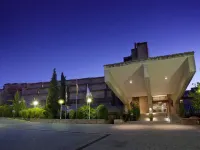

Hotel near Segovia
PParker 2022.05.31
Structurally beautiful, Great views and lovely room. ….but, something uncomfortable about staying there. Weird that we were not allowed outside on Saturday night because there was a wedding… we were clearly in the way as just ordinary guests! We felt like prisoners in our room , only alternative was the bar… which had a football match on the tv. We quite liked listening to the loud wedding pub band from our balcony until late into the evening. So,
overall - not at all what we expected from a parador!
Very Good
47 reviews
4.2/5
Price from
CAD 144
per night
Top hotel picks in Segovia
See all
Check out these top-booked hotels from the past 30 days!
No.1
4.4/5
88 reviewHotel San Antonio El Real
Hotel near Segovia
"Great stay!""Great location"
Select dates to view pricesNo.2
3.8/5
68 reviewHotel ELE Acueducto
Hotel near Segovia
"Good Location"
Select dates to view pricesNo.3
4.3/5
109 reviewEurostars Plaza Acueducto
Hotel near Segovia
"Good Location"
Select dates to view pricesNo.4
4.3/5
72 reviewHotel Cándido
Hotel near Segovia
"Good Location"
Select dates to view pricesWhat travellers say about Segovia attractions
Discover these places worth visiting in Segovia and select a hotel nearby for ultimate convenience
Aqueduct of Segovia
旅旅の径Segóvia, Spain, the most marked and well-known landscape, not the "Ancient Roman Grand Aqueduct". During the ancient Roman period of Turazhen the Great (AD 53-117), in order to introduce the water of the Frio River 18 kilometers away into the city of Segolia, the canal was dug and aqueducts were built to attract water into the city. The aqueduct is 813 meters long and is made of dry khaki granite (without mortar), which is strong and unusual. The aqueduct is 813 meters long and 128 towering columns support double-layered 148 arches. The top of the sink is a canal, more than 30 meters above the ground. The initial section standard 30X30cm was repaired at the end of the 15th century and was converted into a cement tank around 1930, and has been maintained and used since then. The Da Aqueduct has become the city symbol of Segovia. The city emblem and flag of Segovia, and the image of the Da Aqueduct is in the center. In 1985, the ancient city of Segovia + ancient Roman Grand Aqueduct was listed as a World Heritage Site. The current Grand Aqueduct stands at the southern end of the core tourist area of Segovia; the south side is the parking lot (no vehicles can enter the core tourist area), and the north side is the Grand Plaza and the visitor center. The tourists coming and going, hustle and bustle, looking up, queuing for pictures, are all impressed by the unique beautiful scenery.
Alcazar
ZZar ChiOne of the best activities that I love to do in Segovia . Soo lovely
Catedral de Segovia
旅旅の径The Segovia Cathedral, which stands at the highest point of the ancient city of Segovia, has won the reputation of "the lady of the church" for its graceful and elegant shape.
In 1520, the old Romanesque church on the original site was burned down in the war; during the reign of Carlos V, the construction of the new church began in 1525 and took nearly 200 years to complete.
As the latest Gothic church built in Spain, the Segovia Cathedral is a classic of late Gothic architecture. The 88-meter-high Byzantine bell tower pierces the sky, the Romanesque arch is magnificent, the Gothic spire towers are scattered, and the towering main tower and the numerous small spires are set off, which makes the "lady" look more beautiful... In the Plaza Mayor in front of the church, enthusiastic tourists took photos with the cathedral as the background.
Plaza Mayor
旅旅の径Plaza Mayor, built in 1610, is located in the center of the city and is the largest of the N squares in the ancient city of Segovia.
The spacious square, with its shiny bluestone slabs showing its vicissitudes, the quaint iron pavilion sitting in the center, and the surrounding shops lined up one after another, with tourists looking around with interest.
The square is surrounded by exquisite buildings, including the Juan Bravo Theater with pink exterior walls completed in 1917 in the east, the Segovia Cathedral built in 1678 in the west, which is known as the "Lady in the Church", the San Miguel Church rebuilt in 1558 in the south, and the bright yellow City Hall built at the same time as the square in 1610 in the north... The colorful colors and diverse styles complement each other and shine.
Iglesia de San Martin
旅旅の径The Church of St. Martin, located in the center of the old town of Segovia, attracts visitors with its typical Mudhar style. The Church of St. Martin is located in the Moorish Mosque in its early years, and the Mudhar "mud tank" style; The 12th century was converted into a Catholic church, and the architectural style presents a high integration of European and Arab culture... The bell tower is still the square tower of the mosque, and the church nouveau combines the Mudhar style of the interlocking tower and the arched tower with the Roman-style semicircular arch. The top of the tower and the gate of the church are Gothic, Roman-style arched corridors, and the pillar sculptures of each Roman column have different exquisite patterns. The small St. Martin's Church, the epitome of the multicultural blend of the ancient city of Segovia, is worth a look.
Segovia Saint Martin Square
旅旅の径Located in the center of the old city of Segovia, Plaza San Martín is small in size but has great charm.
The square is shaped like a right triangle. The hypotenuse is the Church of San Martín built in the 12th century (the square is named after it). With its typical Mudejar style, it is a microcosm of the multicultural integration of the ancient city.
The two right-angled sides are many residential buildings. The restaurants and bars facing the street have attracted many tourists to stop and taste.
Two sculptures stand prominently in the center of the square. A bronze sculpture - a monument to Juan Bravo, a hero of Segovia. Bravo holds the flag in one hand and holds the sword in the other, and his heroic spirit is overwhelming; a gray-white stone sculpture - a European beauty version of the Sphinx, has a unique charm.
Tips: Juan Bravo, the city hero of Segovia, led the city uprising against the king's tyranny in 1520 and was captured and sacrificed in 1521. In his memory, the Juan Bravo Theater was built in the Plaza Mayor in 1917 and a bronze statue was erected in the Plaza San Martín in 1921.
FAQs About Hotels in Segovia
What are the most popular hotels in Segovia?
There are many popular options for hotels in Segovia. Whether you're traveling for business or a vacation, Hotel San Antonio El Real, Hotel ELE Acueducto and Eurostars Plaza Acueducto are popular choices.
What is the average price for hotels in Segovia?
The average price for hotels in Segovia is CAD 157 for weekdays, and CAD 210 for weekends (Friday–Saturday).
What are popular hotels with high-quality breakfasts in Segovia?
Áurea Convento Capuchinos by Eurostars Hotel Company,Hotel San Antonio El Real and Eurostars Plaza Acueducto are popular hotels with high-quality breakfast. Start your wonderful journey with tasty breakfast!
What hotels in Segovia offer airport shuttle?
Are you worried about transportation in Segovia? Hotel San Antonio El Real, Eurostars Plaza Acueducto and Hotel Cándido are popular hotels providing airport transfer services.
What are available deals for hotels in Segovia?
There are multiple promotions and discounts all year round for Trip.com users . Please check the promotions page to see what promotions are available now on Trip.com.
Which hotels with fitness facilities in Segovia are popular?
Hotel San Antonio El Real, Eurostars Plaza Acueducto and Hotel Cándido are popular hotels with a fitness center. Keep your fitness plan during traveling from Trip.com!
Which popular hotels in Segovia offer free Wi-Fi ?
Whether you're traveling on business or for vacation, internet connection is an essential facility. Hotel San Antonio El Real, Hotel ELE Acueducto and Eurostars Plaza Acueducto are popular hotels with free Wi-Fi.
Which hotels in Segovia have swimming pools?
Eurostars Plaza Acueducto, Exe Casa de Los Linajes and Hotel Cándido provide awesome swimming pools. Book now and enjoy your swimming pool!
What are the best sap hotels in Segovia?
A spa treatment can be the perfect way to unwind after a long day of travel. Hotel San Antonio El Real, Eurostars Plaza Acueducto and Hotel Cándido provide wonderful spa services.
What are best luxury hotels in Segovia?
Segovia has many wonderful luxury hotels with good service. Áurea Convento Capuchinos by Eurostars Hotel Company is a popular choice of visitors.
Local Travel Info
| Highest Price | CAD 1,954 |
|---|---|
| Lowest Price | CAD 53 |
| Number of Reviews | 1,430 |
| Number of Hotels | 157 |
| Average Price (Weekdays) | CAD 157 |
| Average Price (Weekends) | CAD 210 |
Keep Exploring
Most Viewed Hotels
More Accommodation Types
Family-friendly Hotels in SegoviaRomantic Hotels in SegoviaHotels in Segovia With BreakfastHotels in Segovia With SpasHotels in Segovia With BarsHotels in Segovia With GymsHotels in Segovia With Wi-FiSegovia ApartmentsSegovia Homestays4-Star Hotels in Segovia3-Star Hotels in Segovia5-Star Hotels in Segovia2-Star Hotels in Segovia
Hotels near Attractions
Flights from Popular Cities
Toronto to Vancouver FlightsVancouver to Toronto FlightsToronto to Calgary FlightsCalgary to Toronto FlightsToronto to Montreal FlightsToronto to Edmonton FlightsHalifax to Toronto FlightsToronto to London FlightsVancouver to Calgary FlightsWinnipeg to Toronto FlightsCalgary to Vancouver FlightsEdmonton to Toronto FlightsToronto to New York FlightsToronto to Miami FlightsFort st. John to Cranbrook FlightsOttawa to Tofino FlightsComox to Saskatoon FlightsPrince George to Vancouver FlightsToronto to Ottawa FlightsToronto to Shijiazhuang FlightsKelowna to Las Vegas FlightsToronto to Moscow FlightsEdmonton to Istanbul FlightsToronto to Hong Kong FlightsVancouver to Beijing FlightsToronto to Shanghai FlightsVancouver to Jeddah FlightsVancouver to Moscow Flights